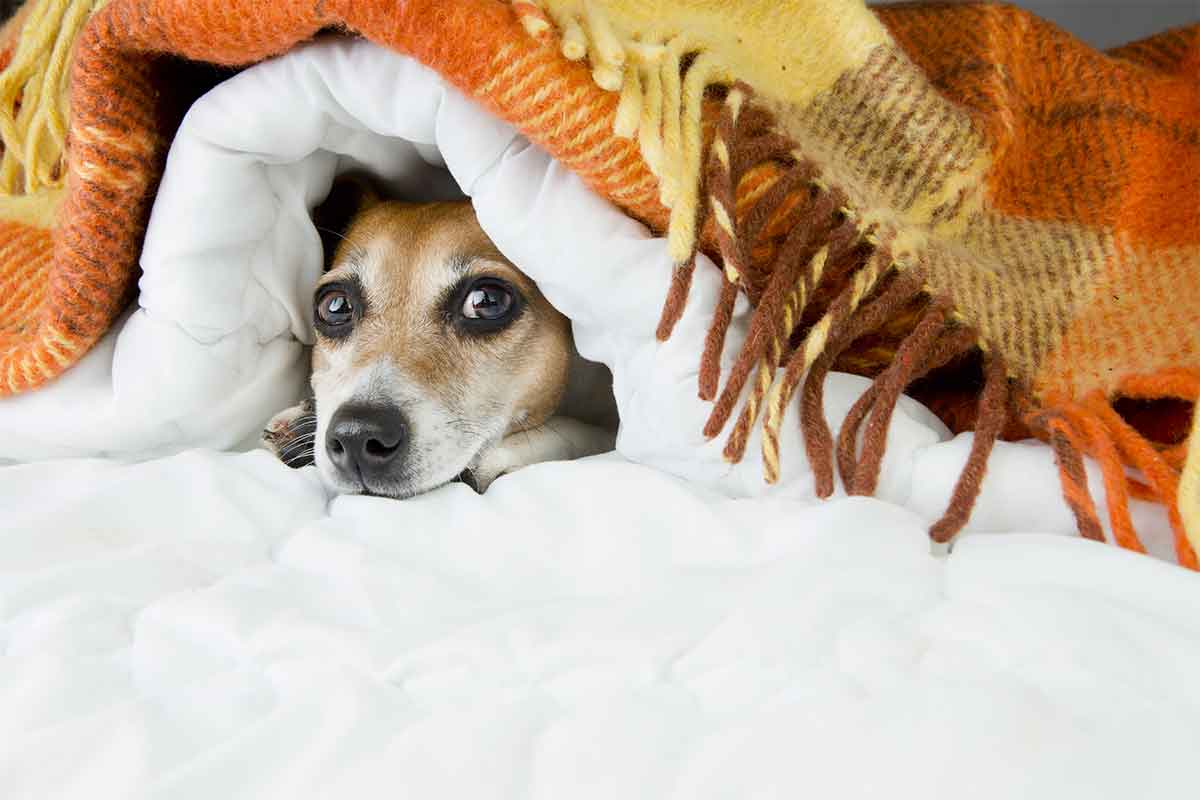When your pet is fearful, anxious, stressed, or just plain needs extra space, you don’t always have time to figure out how to deal with it. Having an action plan in place is a preventive step you can take to help your pet feel safe, one that can stand alone or be used in tandem with veterinary-led interventional efforts. The feeling of being prepared is empowering for you and reassures your pet that you’re looking out for them and all is well.
One way to achieve this is to create a safe, secure home retreat where your pet can go when he wants to rest and relax or when he’s feeling a little—or a lot—stressed.
Building A Fear Free Fortress
A Fear Free fortress doesn’t require a moat or high walls. It simply needs to be a place where your pet feels secure, no matter what’s going on around him.
The fortress may be an area your pet has chosen in the past to hide out, such as a bathroom or bathtub. If he hasn’t indicated a preference, you can create such a space. Ideal spots are insulated from outside noise. Such spaces may include an inner room, bathroom, closet or basement.
Keep exit points and doors of the fortress open to allow free movement in and out. Fearful pets may panic if they are trapped or simply feel trapped inside an enclosed space.
Provide Hiding Places
Inside the fortress, your pet should have places where he can take cover. Some popular hideaway options include the following:
- Blankets and bedding that allow the dog to burrow
- A covered space insulated from outside sounds. You can purchase one or make your own using an indoor doghouse, a covered pet bed, or a crate draped with blankets on up to three sides, leaving the door open.
Stock your pet’s fortress with “survival supplies” so he doesn’t feel the need to venture out if he doesn’t want to. These include water, comfortable bedding, toys, food puzzles, comfort items, and a supply of tasty treats.
Make the fortress inviting in other ways as well. For instance, calming species-specific pheromones like Adaptil can be sprized on bedding or placed in a diffuser near the fortress to provide a chemical sense of comforting calm similar to the serene scene a mother dog or cat provides at birth for nursing pups or kittens.
You can also create comfort through calming scents placed near the fortress. Applying them on specific items of bedding or toys gives pets the choice of moving closer to the scented item or further away. Soothing scents include lavender, chamomile, and worn, unwashed items of clothing belonging to the pet’s favorite people.
Set The Stage
Often, you know in advance which types of events are going to have an effect on your pet. He may be anxious or fearful during thunderstorms, fireworks explosions, or visits from rambunctious relatives. Have practice hangouts in the fortress prior to the frightening event.
Start by laying a Hansel and Gretel-type trail leading into the space. After your pet follows it, reinforce him for being in his fortress, using rewards he appreciates. These might include food treats he doesn’t usually get or play with a favorite toy.
Food Puzzle Fun
Providing food puzzles in the safe space focuses the dog on something positive rather than potential negatives. Food puzzles increase the amount of time dogs spend eating, channeling their energy into a productive activity.
Provide a variety of food puzzle types in the dog’s Fear Free fortress or select types you know your dog enjoys. Puzzles that are easy to “unpack” are good choices for sedentary dogs or those without much hunting instinct. More complex puzzles call for dogs to use paws or nose to move the toy to cause it to release food. Stuff a few food puzzles and freeze them so that you have one readily available when needed to occupy your pet. Freezing also helps the treat toy last longer.
This article was reviewed/edited by board-certified veterinary behaviorist Dr. Kenneth Martin and/or veterinary technician specialist in behavior Debbie Martin, LVT.








